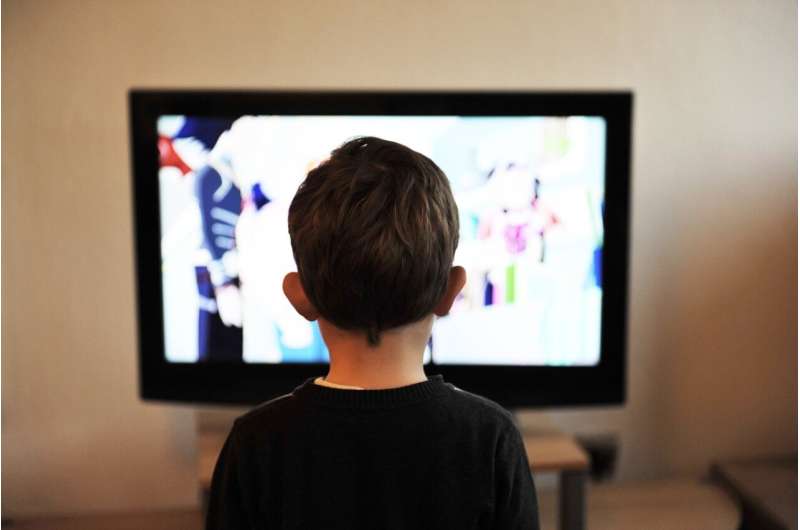Being a Couch Potato is Risky Business: Causes and remedies of sedentary behavior in children

The COVID-19 pandemic changed the lifestyles of people, especially those of children, significantly. As lockdowns were declared across the world, they added sedentary time to children's schedules. Sedentary behavior is defined as any waking behavior in a sitting or reclining position where ≤1.5 metabolic equivalents of energy is expended. It is a major health risk linked to elevated levels of cholesterol, blood pressure, and cardiovascular problems in children. Thus, there is an urgent need to design strategies that can address this issue.
First, it is necessary to understand the underlying factors that correlate with sedentary behavior among children. This behavior is collectively influenced by personal, familial, school- and neighborhood-related factors. However, studies conducted in the past have focused only on a few factors in isolation.
To this end, a team of researchers led by Associate Professor Mohammad Javad Koohsari from the Japan Advanced Institute of Science and Technology, who was a junior researcher at the Waseda University during the study, conducted a study that identified and objectively evaluated the correlates of sedentary behavior in children in Japan. The team comprised Prof. Kaori Ishii and Prof. Koichiro Oka from the Waseda University, Prof. Tomoki Nakaya and Assoc. Prof. Tomoya Hanibuchi from the Tohoku University, Assoc. Prof. Ai Shibata from University of Tsukuba, and Assoc. Prof. Gavin R. McCormack from the University of Calgary (Canada).
This study delves deeper into the socio-cultural, geographical, and indoor/outdoor environmental contexts that contribute to such behavior. "Sedentary behavior, such as television viewing or excessive computer use, is harmful for children's health and well-being. Nevertheless, this is a very common behavior in the younger generations, especially with new technologies. Hence, reducing such inactivity in children is the need of the hour. Understanding the correlates across different domains of sedentary behavior among children can help develop effective interventions to reduce sitting time in this vulnerable population," explains Dr. Koohsari. The study was published online on November 7, 2022, in Scientific Reports.
The team surveyed 343 children from Japan with an average age of 8.8 years. Twenty-two potential correlates were identified across five categories—parental characteristics, household environment, residential neighborhood, school environment, and school neighborhood. Of these, parents' age, mother's educational level, presence of screen-based devices at home and in the child's bedroom, non-educational computer use at home, and traffic safety in residential neighborhoods were found to strongly correlate with sedentary behavior in children.
The findings indicated that parental characteristics played an important part in a child's lifestyle at home. The mother's age and lower educational level was linked to less time spent by the child on homework and recreational activities. On the other hand, the father's age was linked to more time spent by children on homework. In addition, parental support and shared activities helped decrease children's sitting time. These team noted that educating parents about public health programs can potentially help decrease their children's sedentary behavior.
Additionally, the environments inside and outside the house also affect children's behavior. Screen-based devices at home, such as video/DVD players, video game consoles, and televisions (TVs) were negatively associated with time spent on homework. Therefore, interventions encouraging parents to remove personal TVs from their children's bedrooms and sensitizing children on the importance of limiting screen time are necessary.
Likewise, the safety of the outdoor environment can also shape children's behavior towards physical activities. A neighborhood that is considered safe for walking and cycling can motivate children to spend time outside and be active. Safety from traffic can also motivate parents to allow their children to be independently mobile instead of opting for personal vehicles. To ensure this, neighborhoods should be made safer with improved traffic norms.
Apart from the inactivity at home, a major proportion of the children's sedentary time corresponded with the time spent at school. To mitigate this, school-based interventions that reduce prolonged sitting in classrooms should be developed to reduce children's overall sitting time.
In conclusion, these findings underscore the need for context-specific strategies that address the different socio-cultural and urban design correlates of sedentary behavior in children. "Sedentary behavior is an emerging risk factor for children's cardiometabolic health. The correlates of sedentary behavior in children identified by our study were highly subjective and different across domains. Therefore, future studies and efforts for developing strategies to reduce this behavior must look into the different domains and contexts that contribute to it," concluded Dr. Koohsari.
More information: Mohammad Javad Koohsari et al, Correlates of domain-specific sedentary behaviors and objectively assessed sedentary time among elementary school children, Scientific Reports (2022). DOI: 10.1038/s41598-022-23410-7




















